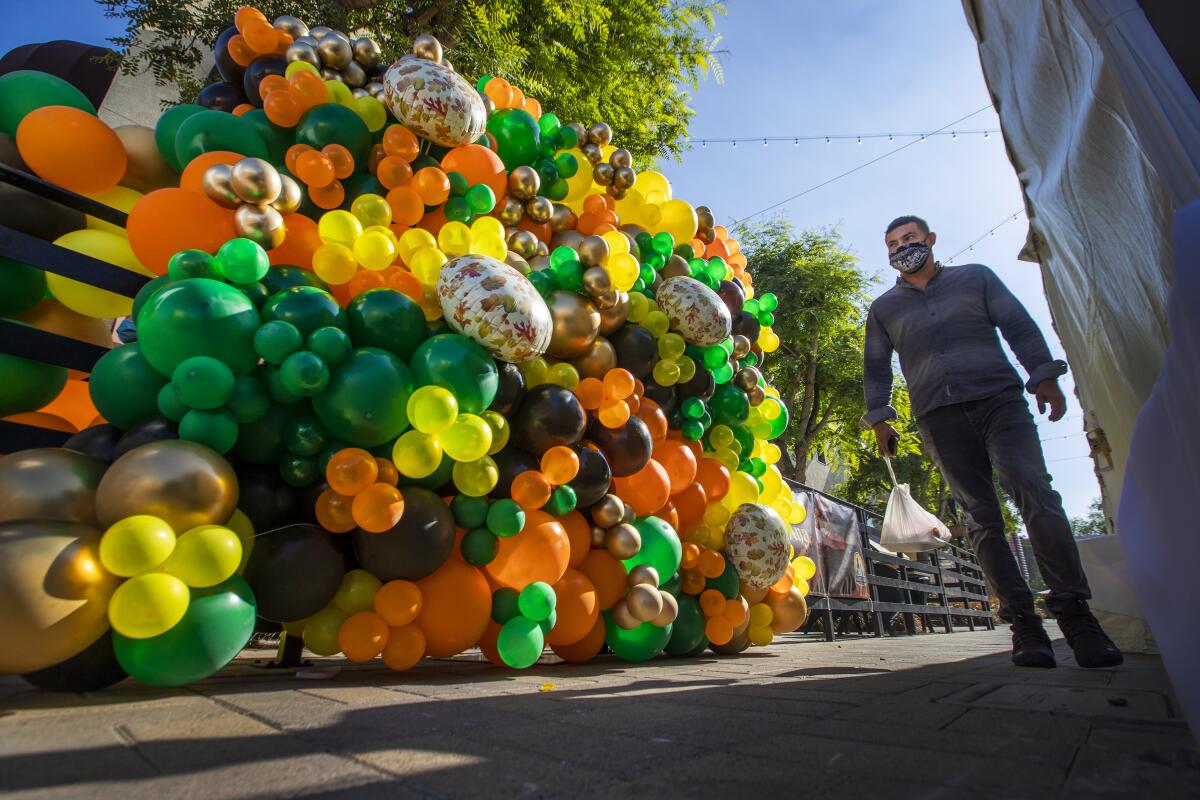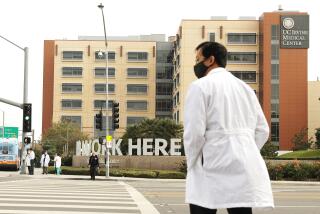‘It’s devastating.’ Orange County merchants, officials say COVID order shouldn’t lump them in with L.A.

- Share via
Harbor Grill in Dana Point was bustling and completely booked with diners Saturday afternoon when owner Keegan Hicks learned outdoor dining would come to an end in Orange County and the rest of Southern California on Sunday night.
Hicks worried this day would come, but he had questions and concerns.
“We understand why these measures are being taken. We have nothing but concern and solidarity for frontline hospital workers,” Hicks said. “But we believe that outdoor dining — as long as the restaurant is taking the proper protocols — is not responsible for the spread of the coronavirus.”
He said the restaurant had reopened in May and that there had been no known coronavirus cases stemming from his customers or his 60 employees. He now worries about the economic hardship ahead.
“We believe complete industry shutdown is outrageous,” he said. “We will comply, but we hope that our local legislator — and at the state level — will work on a variance for outdoor dining, as long as outdoor dining is being done responsibly by customers and restaurants.”
The stay-at-home order was prompted by hospital intensive care beds becoming scarce across Southern California. The move was set to trigger on Saturday if ICU capacity in a region of California dropped below 15%. On Saturday, Southern California’s ICU capacity was 12.5%, and in the San Joaquin Valley, 8.6%, according to data released by the state. Bay Area counties were voluntary imposing a stay-at-home order on Sunday night.
Some parts of Southern California have been hit harder than others. L.A. County has broken single-day case records in four of the last five days. On Saturday, 9,218 coronavirus cases were reported, according to the Los Angeles Times’ independent tally.
California has set new highs for COVID-19 hospitalizations for seven consecutive days, with 9,430 patients in hospitals Saturday — that’s more than quadruple the number on Oct. 24, when 2,254 COVID-19 patients were in hospitals.
California’s intensive care units have never been busier with COVID-19 patients, with 2,182 in ICUs on Saturday, the third consecutive day the record had been broken. During the summer surge, the number never went above 2,058.
But some other counties in the Southland, including Orange, argue their conditions are not as bad as in the hot zones and maintain the state should not lump them in with L.A. County.
Orange County Supervisor Lisa Bartlett said she supported a regional approach so counties could assist one another if their hospitals filled up but said the state’s categories were simply too broad.
“Grouping 11 counties in Southern California into one region, particularly with one county that represents over 25% of the state’s population, is problematic,” she said, referring to Los Angeles, the state’s most populous county.
Bartlett noted that Orange County’s ICU capacity was more than 20%, compared with the regional availability of 12.5%. By being forced to shut down or reduce operations, she said, business sectors such as restaurants and theme parks are being “unfairly punished” by the new rules.
“Based on our current ICU bed capacity, I think Orange County is in fairly good shape, but that could also change very quickly,” Bartlett said. “Our ICU bed capacity literally dropped 15% in one week. So we have to watch things very carefully.”
Bartlett said she and Orange County Supervisor Don Wagner planned to introduce a resolution on Tuesday affirming the county’s commitment to having as much local control of coronavirus restrictions as possible.
Orange County Sheriff Don Barnes said Saturday that deputies would not be dispatched to enforce compliance with stay-at-home rules or those governing face coverings and social distancing — as has been the department’s policy throughout the pandemic.
“Compliance with health orders is a matter of personal responsibility and not a matter of law enforcement,” he said in a statement.
Orange County has been hit hard by the pandemic economically, with Disneyland closed and the tourist economy virtually dead.
Hilary Goldner, co-owner of Sweet 1017 Hairdressing in Seal Beach, heard the news about the order through text messages from her staff. After a busy Saturday, she is getting ready to close her salon for three weeks.
“It’s devastating,” she said. “We had the two closures already, and this one comes at the busiest time of the year. Everyone is trying to move forward with their lives, and we play a role in that. It’s unfortunate and disappointing.”
Goldner said she understood that hospitals were getting slammed, but she doesn’t believe hair salons are contributing to the spread of COVID-19.
“We feel that we are already in compliance,” she said. “We’re in masks; our clients are in masks. We’re sanitizing. We’re going above and beyond for the safety of our clients.”
More to Read
Sign up for Essential California
The most important California stories and recommendations in your inbox every morning.
You may occasionally receive promotional content from the Los Angeles Times.
















